
 |
BAPTIST BROWN AND NINETEENTH CENTURY EDUCATION
Francis Wayland
Brown Leaders in Education
Brown and the University of Michigan
From the inauguration of President Francis Wayland in 1827 to the opening of the modern University of Chicago in 1892 Brown's prestige as the most influential Baptist institution in the country was at its peak and its ties to the denomination stronger than at any other period in its history. The era opened with a campaign to oust Asa Messer for his liberal (i.e. unitarian) theological views, led by Calvinistic Baptists in Rhode Island and Massachusetts. Beginning in 1824, faculty departures, student disorders and transfers to other colleges, and vituperative controversy in the Providence press threw the University into turmoil. In 1826 Messer was "compelled to resign voluntarily." Nicholas Brown played a stabilizing role as this crisis unfolded, and warmly welcomed Wayland, a graduate of Union College, considered one of the best educated and most visionary young Baptist ministers in the country.
The student body now enrolled many more Baptists. (Congregationalists had predominated earlier.) More students entered in the twenties and even thirties, typically aspiring clergymen, self-supporting or beneficiaries of Baptist ministerial education funds. Baptist academies supplied many of the matriculants, also with the nondenominational University Grammar School in Providence. More Brown graduates entered the Baptist ministry. Some were influential missionaries in Burma or China. Brown graduates taught in and presided over Baptist college in the west and south, as well as state universities.
This progress was jeopardized after the Panic of 1837, which depressed both college enrollments and the receipts of religious philanthropies, including ministerial education funds from the early 1840s until 1850. Wayland's best known reforms -- his "New System" of 1850 -- were a response to this uncertainty. They also reflected his evolving view of the education most appropriate for Baptist clergy and laity. Similarly, the repudiation of the "New System" by Wayland's successor, Barnas Sears, had its roots in his contrasting dedication to scholarship and advanced learning as essential resources for Northern Baptists. Ezekiel Gilman Robinson, who succeeded Sears after the caretaker presidency of Alexis Caswell, was also devote to theological scholarship.
By contrast, Robinson's successor, E. Benjamin Andrews, had moved from a pastorate to a professorship in academic social science. His commitment to graduate studies and disciplinary research had been strengthened when he joined other leading Baptists to promote the new University of Chicago. With his inauguration in 1889 a new era opened in Brown's history.
Francis Wayland, president of Brown University, 1827-1855. One of the best known Baptist leaders of his time, and pastor of Boston's First Baptist Church from 1821 to 1826, he was the obvious candidate for Brown's presidency when Asa Messer resigned. From 1827 to 1840 he labored to raise standards at Brown by appointing faculty who had been his students, banning textbooks from the classroom in an effort to replace rote recitations, and encouraging lectures. His textbooks, the Elements of Moral Science (1835) and Elements of Political Economy (1837), widely used across the country, emerged from his own lecture courses. Tuition was raised and the college calendar altered, eliminating the long winter vacation in which poor students had taught in country schools. Discipline was tightened: faculty inspection of student rooms during study hours was required. And part-time faculty - the medical professors and Tristam Burges - departed. A Phi Beta Kappa chapter was established, recognition by Harvard and Yale of Brown's improved standing.
At the same time, less conspicuously, Wayland sought to extend the benefits of education more widely. In 1827 he had unsuccessfully proposed that the Corporation establish an alternate course in science, English literature, and modern languages. In 1828 he chaired a committee which urged expansion of the Providence public schools to include grammar schools and a high school as well as primary instruction.
During the economic downturn of the 1840s Wayland's utilitarianism came to the fore. From his study of political economy he had concluded (with Adam Smith) the endowments for faculty salaries and scholarship aid to students were ineffective. Education would pay for itself if it responded to popular demand. These views pervaded his Thoughts on the Present Collegiate System in the United States (1842), a comprehensive critique of deficiencies he perceived at Brown.
Lack of consensus and practical obstacles, however, blocked significant change. Wayland resigned in 1849, but agreed to remain providing a "New System" were instituted. Its features were set forth in his famous Report to the Corporation on Changes in the System of Collegiate Education (March 28, 1850). In practice the reorganization created an earned A.M. degree for a full classical course (previously awarded the A.B., a three-year A.B. degree with one classical language, and a three-year Ph.B. degree with none), and also encouraged students not seeking a degree to enroll in individual courses. The Report was much discussed by contemporary educators, and has been a key source for twentieth century educational historians.
In 1840 President Francis Wayland visited England, Scotland, and France to study education abroad, and in 1842 wrote Thoughts on the Present Collegiate System in the United States, urging changes in higher education. [The copy at right is inscribed "H.S.H. Wayland from her husband"]
On March 28, 1850 President Wayland presented his famous Report to the Corporation on Changes in the System of Collegiate Education. Aiming to extend education to others than those entering the learned professions, the report proposes changes in the curriculum through which, by adopting "a system of equivalents, we may confer degrees upon a given amount of knowledge, though the kind of knowledge which makes up this amount may differ in different instances," and offer useful education to "the agriculturist, the manufacturer, the mechanic, or the merchant." As Wayland declared, "It is therefore eminently unjust, practically to exclude the largest classes of the community from an opportunity of acquiring that knowledge, the possession of which is of inestimable importance, both to national progress and individual success." Ideally, Wayland felt that "The various courses should be so arranged, that in so far as it is practical, every student might study what he chose, all that he chose, and nothing but what he chose."
|
[For more information see "Wayland's Way," Brown Alumni Magazine, May 1995. The painting at right depicts Keio founder Yukichi Fukuzawa reading a Francis Wayland text while the battle of Ueno erupts outside his classroom window (Yasuda Yukihiko/ courtesy Keio University). |
As president of Brown, following Francis Wayland, he oversaw
the deliberate dismantling of a number of controversial elements of his
predecessors' "New System" -- particularly the redefined A.B. and A.M.
degrees which was convinced had undermined the University's reputation. He also
raised scholarship funds, especially from Baptist sources, a move Wayland had
rejected in the 1840s. His final service, from 1867 to 1889, was as General Agent of the Peabody
Education Fund, established by philanthropic northerners to promote common
school systems across the South, which, in contrast to New England, were
generally lacking before 1861. To achieve this objective, Sears insisted that
racial integration -- the goal of the abolitionist and Radical Republican
Senator Charles Sumner -- should be abandoned as a policy objective. Sears thus
anticipated in education the retreat from enforcement of the civil rights of
freed slaves embodied in the political "Compromise of 1877" following
the disputed election of 1876.
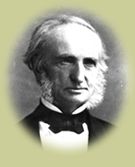 Alexis Caswell
(Class of 1822), president of Brown
University, 1868-1872. He taught at Columbian College (George Washington
University) from 1822 to 1827, and studied theology with its president,
William Staughton. At Brown he was professor of mathematics, and natural
history from 1828 until his retirement in 1863. In 1868, after both Martin B.
Anderson and Ezekiel Gilman Robinson had declined the offer of the presidency,
Caswell accepted the office and served until 1872. He was a noted scientist, a
fellow of the American Academy of Arts and Sciences, member of the National
Academy of Science and officer of the American Association for the Advancement
of Science.
Alexis Caswell
(Class of 1822), president of Brown
University, 1868-1872. He taught at Columbian College (George Washington
University) from 1822 to 1827, and studied theology with its president,
William Staughton. At Brown he was professor of mathematics, and natural
history from 1828 until his retirement in 1863. In 1868, after both Martin B.
Anderson and Ezekiel Gilman Robinson had declined the offer of the presidency,
Caswell accepted the office and served until 1872. He was a noted scientist, a
fellow of the American Academy of Arts and Sciences, member of the National
Academy of Science and officer of the American Association for the Advancement
of Science.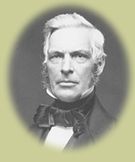 Barnas Sears (Class of 1825), president of Newton
Theological Institution, 1836-1848 and of Brown University, 1856-1867, general
agent of the Peabody Educational Fund, 1867-1880. After graduation from Brown he
studied at Newton Theological Institution and at Andover Seminary. Following a
brief pastorate at Hartford, he studied with noted Baptist scholars in Germany
and aided the founders of a German Baptist movement. Though not an original
scholar, he was one of the most learned Baptists of his generation. As professor
of theology and president at Newton he raised scholarly standards substantially
and persuaded the talented classicist and Biblical scholar Horatio B. Hackett to
move there from the Brown faculty. From 1848 to 1855, he was Secretary of the
Massachusetts Board to Education, in succession to Horace Mann, seeking by tact
and conciliation to calm contentiousness and consolidate Mann's achievements.
Barnas Sears (Class of 1825), president of Newton
Theological Institution, 1836-1848 and of Brown University, 1856-1867, general
agent of the Peabody Educational Fund, 1867-1880. After graduation from Brown he
studied at Newton Theological Institution and at Andover Seminary. Following a
brief pastorate at Hartford, he studied with noted Baptist scholars in Germany
and aided the founders of a German Baptist movement. Though not an original
scholar, he was one of the most learned Baptists of his generation. As professor
of theology and president at Newton he raised scholarly standards substantially
and persuaded the talented classicist and Biblical scholar Horatio B. Hackett to
move there from the Brown faculty. From 1848 to 1855, he was Secretary of the
Massachusetts Board to Education, in succession to Horace Mann, seeking by tact
and conciliation to calm contentiousness and consolidate Mann's achievements.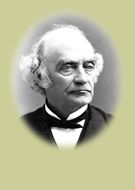 Samuel
Stillman Greene
(Class of 1837), superintendent of schools in Springfield, Massachusetts,
1840-1841, superintendent of schools in Providence, 1851-1855, professor at
Brown, 1851-1883, member of Providence School Committee, 1854-1872, president
of the Rhode Island Institution of Instruction, 1856-1860, president of the
National Teachers Association, 1864-65, president of the American Institute of
Instruction, 1869-70. The normal school which he and others started in
Providence in 1852 became the Rhode Island Normal School in 1854 and is now
Rhode Island College.
Samuel
Stillman Greene
(Class of 1837), superintendent of schools in Springfield, Massachusetts,
1840-1841, superintendent of schools in Providence, 1851-1855, professor at
Brown, 1851-1883, member of Providence School Committee, 1854-1872, president
of the Rhode Island Institution of Instruction, 1856-1860, president of the
National Teachers Association, 1864-65, president of the American Institute of
Instruction, 1869-70. The normal school which he and others started in
Providence in 1852 became the Rhode Island Normal School in 1854 and is now
Rhode Island College.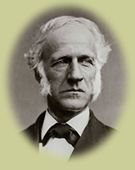 Ezekiel
Gilman Robinson (Class of 1838), president of Rochester Theological
Seminary, 1860-1872, and of Brown University, 1872-1889. He extended the
course of study at Rochester from two to three years, and, although offered
the presidency of Brown in 1868, stayed on until he had secured endowment and
housing for the Theological Seminary separate from the University of
Rochester, of which it was not a part. At Brown he set about repairing
deficiencies in the physical plant and the curriculum by the addition of new
buildings, sciences courses and the introduction of graduate study.
Ezekiel
Gilman Robinson (Class of 1838), president of Rochester Theological
Seminary, 1860-1872, and of Brown University, 1872-1889. He extended the
course of study at Rochester from two to three years, and, although offered
the presidency of Brown in 1868, stayed on until he had secured endowment and
housing for the Theological Seminary separate from the University of
Rochester, of which it was not a part. At Brown he set about repairing
deficiencies in the physical plant and the curriculum by the addition of new
buildings, sciences courses and the introduction of graduate study.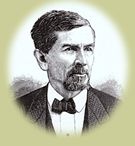 George
Whitefield Samson
(Class of 1839), president of Columbian College, 1858-1871, president of
Rutgers Female College in New York City. He conducted Columbian College (now
George Washington University) through the Civil War, renting the main edifice
to the government for a hospital, and after the war organized a law school and
a theological department for young men of both races.
George
Whitefield Samson
(Class of 1839), president of Columbian College, 1858-1871, president of
Rutgers Female College in New York City. He conducted Columbian College (now
George Washington University) through the Civil War, renting the main edifice
to the government for a hospital, and after the war organized a law school and
a theological department for young men of both races.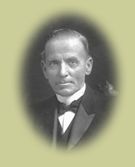 Edward Hicks Magill
(Class of 1852), president of Swarthmore
College, 1871-1889. His goal at Swarthmore was to raise the college, which was
dominated by its preparatory department, to be the first coeducational
institution of college rank in the eastern United States.
Edward Hicks Magill
(Class of 1852), president of Swarthmore
College, 1871-1889. His goal at Swarthmore was to raise the college, which was
dominated by its preparatory department, to be the first coeducational
institution of college rank in the eastern United States.
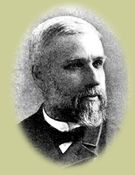 Josiah Nelson Cushing (Class of 1862), president of Baptist College,
Rangoon, Burma, 1892-1905. As a missionary in Burma since 1865 who had
translated the Bible into the Shan language and constructed a dictionary of
that tongue, in 1892 he was called upon temporarily to take charge of the
College, and in 1895 appointed president. He developed the Normal department,
which provided for the education of the certified teachers required by the
government, and raised the standards to the rank of a "First Arts
College" affiliated with Calcutta University. The College was later
renamed Judson University.
Josiah Nelson Cushing (Class of 1862), president of Baptist College,
Rangoon, Burma, 1892-1905. As a missionary in Burma since 1865 who had
translated the Bible into the Shan language and constructed a dictionary of
that tongue, in 1892 he was called upon temporarily to take charge of the
College, and in 1895 appointed president. He developed the Normal department,
which provided for the education of the certified teachers required by the
government, and raised the standards to the rank of a "First Arts
College" affiliated with Calcutta University. The College was later
renamed Judson University. 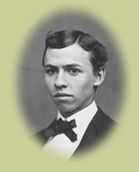 Albert Arnold Bennett (Class of 1872), president of the Baptist
Theological Seminary of Japan. The Seminary came about after Bennett, who had
arrived in Japan as a missionary in 1879 and had joined a small church, began
to provide weekly instructions in preaching for new deacons who otherwise had
no role models. In 1884 the Theological Seminary opened with five students.
According to one of its teachers, "he provided a home for it in his own
grounds ... while as yet it had none. He served as its Principal for many
years, -- he was much too modest to accept the title of President; -- and was
always its chief instructor."
Albert Arnold Bennett (Class of 1872), president of the Baptist
Theological Seminary of Japan. The Seminary came about after Bennett, who had
arrived in Japan as a missionary in 1879 and had joined a small church, began
to provide weekly instructions in preaching for new deacons who otherwise had
no role models. In 1884 the Theological Seminary opened with five students.
According to one of its teachers, "he provided a home for it in his own
grounds ... while as yet it had none. He served as its Principal for many
years, -- he was much too modest to accept the title of President; -- and was
always its chief instructor." 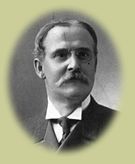 Benjamin Ide Wheeler (Class of 1875), president of the University of
California, 1899-1919. Coming to the University of California after a
succession of short-term presidents, Wheeler presided over the growth of the
University from 2,400 students in 1899 to over 20,000 in 1919, while observing
his opinion that the purpose of a State institution was to provide the student
with practical education while fitting them for what he termed the
"abundant life."
Benjamin Ide Wheeler (Class of 1875), president of the University of
California, 1899-1919. Coming to the University of California after a
succession of short-term presidents, Wheeler presided over the growth of the
University from 2,400 students in 1899 to over 20,000 in 1919, while observing
his opinion that the purpose of a State institution was to provide the student
with practical education while fitting them for what he termed the
"abundant life."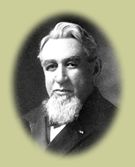 William A. Mowry (Class of 1858), principal of English High School, Providence, 1859-1864, and of Mowry and Goff's English and Classical School, 1864-1888. He also edited the Boston based journals, Journal of Education from 1884 to 1886, and Education from 1886 to 1913, and was president of the American Institute of Instruction.
William A. Mowry (Class of 1858), principal of English High School, Providence, 1859-1864, and of Mowry and Goff's English and Classical School, 1864-1888. He also edited the Boston based journals, Journal of Education from 1884 to 1886, and Education from 1886 to 1913, and was president of the American Institute of Instruction.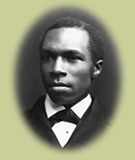 Inman Page (Class of 1877), president of Lincoln University (then Lincoln Institute), Jefferson City, Missouri, 1880-1898, of Langston University (then the Agricultural and Normal University) in Oklahoma, 1898-1915, of Western Baptist College, Macon, Missouri, 1915-1918, of Roger Williams University, Nashville, Tennessee, 1918-1920, and of Lincoln University, 1922-1923. At Lincoln Institute he reversed the policy of hiring all white teachers. When establishing the curriculum for the newly founded Langston University he included ancient history, philosophy, and classics, as well as agriculture and vocational skills. Students flocked to Langston and the University flourished during Page's administration. His departure was brought about by politics when Oklahoma achieved statehood.
Inman Page (Class of 1877), president of Lincoln University (then Lincoln Institute), Jefferson City, Missouri, 1880-1898, of Langston University (then the Agricultural and Normal University) in Oklahoma, 1898-1915, of Western Baptist College, Macon, Missouri, 1915-1918, of Roger Williams University, Nashville, Tennessee, 1918-1920, and of Lincoln University, 1922-1923. At Lincoln Institute he reversed the policy of hiring all white teachers. When establishing the curriculum for the newly founded Langston University he included ancient history, philosophy, and classics, as well as agriculture and vocational skills. Students flocked to Langston and the University flourished during Page's administration. His departure was brought about by politics when Oklahoma achieved statehood.
|
![]() exhibits
home |
exhibits
home |
![]() special
collections home |
special
collections home |
![]() library
home
library
home
Comments to:
![]() hay@brown.edu
hay@brown.edu
Last Updated: Friday, 27-Feb-2015 12:11:08 EST
© 2001, Brown University Library. All rights reserved.
You are the [an error occurred while processing this directive] visitor since November 12, 2001.